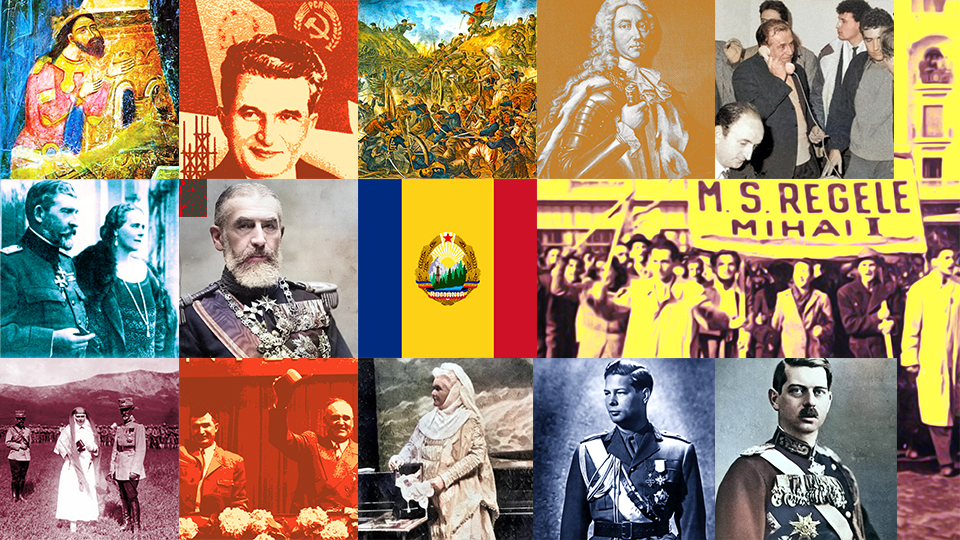The Treaty of Adrianopolis
Europe was in the post-Napoleon era, the Holy Alliance formed by Russia, Austria and Prussia had set up a new order on the continent

Steliu Lambru, 29.11.2021, 13:30
The southeast European world in the first half of the 19th century was undergoing rapid change in the light of modern ideas, especially the nationalist idea. Europe was in the post-Napoleon era, the Holy Alliance formed by Russia, Austria and Prussia had set up a new order on the continent. The liberalism of the 18th century aimed to encourage national capitalism, and in Southeast Europe anti-Ottoman sentiments were expressed more and more.
The main power in the Romanian space was now Russia, and the history of the birth of modern Romania cannot be understood well without looking at Russias presence and actions. It was an ultra-conservative movement which had tried to apply some European reform ideas. The tradition of reforms started with Czar Peter the Great (1672-1725), in the early 18th century. Czar Alexander I (1777-1825) started to reform the Russian state after the French model, but the instability and terror caused by the French Revolution between 1789 and 1795 prevented him from doing that. The Holy Alliance of the three powers that defeated Napoleon I committed to suppress any attempt at revolution, and the upending of the established order.
At the same time, the Romanian space had been for centuries in the grip of an imperial power that was equally ultra-conservative, the Ottoman Empire. Here European reforms penetrated even harder than in Russia, which had a European style elite leadership. The Ottoman Empire had imposed in the Romanian Principalities the so-called Phanariote rulers, from elite Greek families, whose administration proved corrupt and feckless. Romanian European elites would develop a virulent anti-Ottoman rhetoric, as they sought support from an apparently liberal Russia.
In 1826, Russia and the Ottoman Empire had signed the Akkerman convention, ending the Phanariote era. Ionita Sandu Sturdza in Moldavia and Grigore IV Ghica in Wallachia became the two Romanian princes to occupy the thrones in Iasi and Bucharest. A 7 year term on the throne was imposed, and the princes were elected by the boyars, the traditional nobility. The convention granted the principalities the right to free international commerce. However, in 1828, war broke out between Russia and the Ottoman Empire, after the Ottomans violated the convention and forbade passage to Russian ships in the Black Sea straits. This war was one of a chain of Russian-Turkish wars that started in early 18th century. In 1829, the Russians emerged the victors, and forced the Turks to sign the Treaty of Adrianopolis, the city called Edirne now, with great consequences upon the history of Romanians.
Constantin Ardeleanu is a professor with the Lower Danube University of Galati, he wrote extensively about the importance of the Danube in the history of Romanians in the 19th century. In his opinion, the Treaty of Adrianopolis is the first milestone in the birth of the Romanian modern state:
“It meant so much for the development of the Romanian state. It is a crucial moment in the history of Romania, but we dont always grant it enough attention. That is because this is the moment in which, as a result of the agreement between the two powers, as a result of the fact that the Principalities gain commercial freedom, as a result of the ending of the Ottoman economic monopoly, Western capitalism arrived in the Romanian space. The Treaty of Adrianopolis is a major historical landmark for the beginning of the economic modernization of the Principalities, by connecting them to the global market. There is no doubt that some capitalist relationships existed before, but starting at that moment, in 1829, the Romanian Principalities emerge on the world map as a major hub for the grain trade, not only on the Istanbul market, but in the entire global economy. This is the moment when economic modernization changes the two principalities, Moldavia and Wallachia.”
After the war, the treaty was a major breach in the Ottoman monopoly over the Romanian principalities. It was signed on September 14, 1829, and it granted Russia the status of protecting power for the two countries. The Ottoman Empire still acted as suzerain power, but could not longer make decisions unilaterally. The southern border of Wallachia was the navigable portion of the Danube, and, more importantly, the Danube ports of Turnu, Giurgiu, and Braila, under Ottoman control, returned to Wallachian control. Freedom of navigation on the Danube was granted for Wallachian trade ships, and Moldova gained the right to develop the port of Galati. In this way, grain trade became the main source of income for the two Romanian states.
The Treaty of Adrianopolis confirmed Russian military presence on Romanian territories. Until 1834, the Russian administration tried to reform the two countries with a set of liberal reforms, much more liberal than in Russia itself. To this end, the first constitutional project in the Principalities was the Organic Regulation introduced by Russian governor Pavel Kiseleff. Historians today agree that the reforms applied by the Russians in Wallachia and Moldavia were, in fact, experiments to evaluate the effect this kind of changes would have over a population. After 1834, Romanians managed to prove that a simple experiment can bear fruit.






























